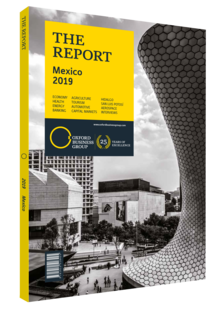César Maillard Canudas, Managing Partner, Maillard, Cerbón, Canudas: Viewpoint

Viewpoint: César Maillard Canudas
In May 2019 regulations were published in the Federal Official Gazette that were the legal implementation of the constitutional reforms related to labour justice. They reflect commitments to global standards such as the International Labour Organisation’s conventions on association and collective bargaining, as well as provisions related to these principles in the US-Mexico-Canada Agreement (USMCA), which was signed by Mexico in November 2018 and awaits ratification from the other two members.
Indeed, this reform has been significantly influenced by Mexico’s international commitments. The influence of the USMCA is notable. The agreement includes a labour chapter (Chapter 23) and annex (Annex 23-A) that contain specific obligations for Mexico, particularly related to the freedom of association and collective bargaining, as well as the establishment of an effective verification system to guarantee personal, secret and free workers’ voting in union election and collective contract registration.
In addition, the USMCA highlights Mexico’s obligation to guarantee that labour conflicts over representation are settled in labour tribunals in free and secret voting. It also establishes an independent authority to handle collective bargaining agreements. It states that collective bargaining agreements and union statutes must be open and accessible for online consultation.
The labour reform establishes procedures to guarantee unions’ representativeness, as well as ensure legal certainty in collective bargaining through a consultation mechanism by which employees are able to express themselves in a secret and free vote on issues such as conflict resolution between unions and the election of their leaders.
Unions will also be compelled to submit existing collective contracts to a legitimisation process. If contracts are not submitted by the end of 2023, the labour authority can dismiss the contract. This procedure aims to make representation more transparent. The reform forces unions that want to strike against a company without a union agreement to obtain representation evidence from the Federal Centre for Conciliation and Labour Registration that shows the union has support from at least 30% of the company’s employees. This independent agency was created to manage conflict resolution between employers, employees and unions, as well as to register at national level collective bargaining agreements, internal labour regulations and union registrations. It is expected to improve certainty and confidence to the parties in conflict to achieve a satisfactory result and avoid reaching judicial instances.
The labour reform strengthens trade associations’ obligations with regards to gender equality and includes the designation of beneficiaries within employees’ contracts. It also contains provisions against labour discrimination and child labour. It guarantees protections for working mothers and establishes regular labour procedures, such as employment termination, contract rescission and separation, with legal rules. It limits trials to one legal hearing preceded by a preliminary hearing. Special work, such as working from home and farming, is also covered by these provisions.
For regular legal procedures a series of principles have been established in order to improve justice expeditiousness such as orality, immediacy, continuity, concentration and publicity. The acceleration of procedures is a basic goal of this reform, by which tribunals, courts and conciliation centres are obliged to use new IT towards this end.
However, not allowing the monitoring and assessment commissions to intervene and decide on collective bargaining has the potential to destabilise the syndication process and generate conflict in the workplace. The government will ultimately have to establish flexible mechanisms to buffer this effect.
You have reached the limit of premium articles you can view for free.
Choose from the options below to purchase print or digital editions of our Reports. You can also purchase a website subscription giving you unlimited access to all of our Reports online for 12 months.
If you have already purchased this Report or have a website subscription, please login to continue.

